SEER Ratings: What This Means for Your HVAC Unit
Enjoy reading the latest DIY articles and saving money?
Receive our latest helpful hints, tricks and savings, directly to your inbox.
Posted October 17, 2022
Taking care of our planet, and developing more sustainable, environmentally-friendly methods to reduce the global carbon footprint, is on the forefront of many industries. Across all types of business, changes are taking effect to regulate energy consumption and influence consumers to do their part to reduce products and emissions that damage our planet and its future.
The U.S. Department of Energy (DOE) establishes regulations that lead these changes. In the HVAC industry in particular, this means developing and planning ahead to develop, equipment that regulates our home’s temperature and air quality effectively, but also more efficiently.
In the Energy Policy and Conservation Act (EPCA) of 1975, the DOE was given authority to develop, revise, and implement minimum energy conservation standards for the equipment in our homes. In 1987, the National Appliance Energy Conservation Act established the first minimum efficiency requirements for home HVAC systems. These standards were implemented in 1992, but were later revised in 2006 and 2015.
In 2015, the DOE implemented minimum energy efficiency standards for heating and cooling equipment. Given the dramatic differences in average temperatures, humidity, and severity of peak seasons, the DOE decided to create separate standards for homes in the northern parts of the United States and those in the southern parts.
The standard measure of energy efficiency is called SEER, which is short for seasonal energy efficiency ratio. It represents the total cooling of an air conditioner or heat pump (in btu) during the normal cooling season, as compared to the total electric energy input (in watt-hours) consumed during that same period.
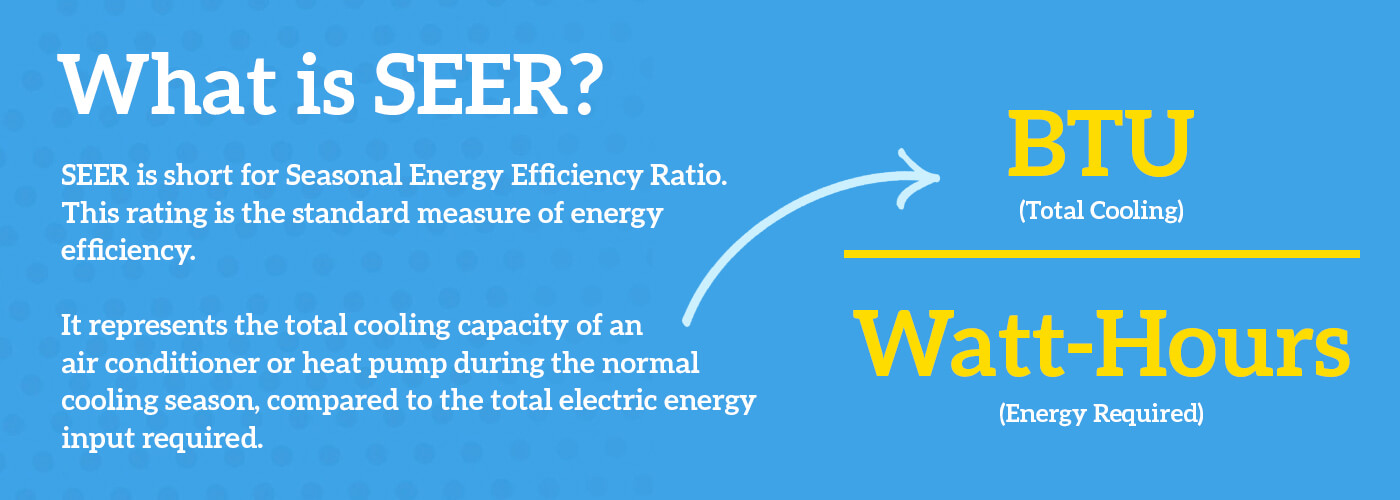
Previously, in the south, the minimum SEER rating was about 14. In 2016, SEER2 protocols were developed, which laid out a scheduled plan to reduce energy consumption by raising the minimum efficiency requirements for your HVAC system. By 2023, SEER2 would fully replace SEER ratings.
What is SEER2?
The major difference between SEER and SEER2 are that SEER2 ratings vary by region, to account for seasonal temperature differences.
Effective January 1st, 2023, all new HVAC systems sold in any particular region must be SEER2 compliant.
In the south, where we use significantly more cooling energy, this raises the minimum SEER rating from 14 to 15. This means that in our area, we will be required to sell only more efficient HVAC systems – and homeowners will only be able to purchase SEER2 compliant (more efficient) systems for their homes.
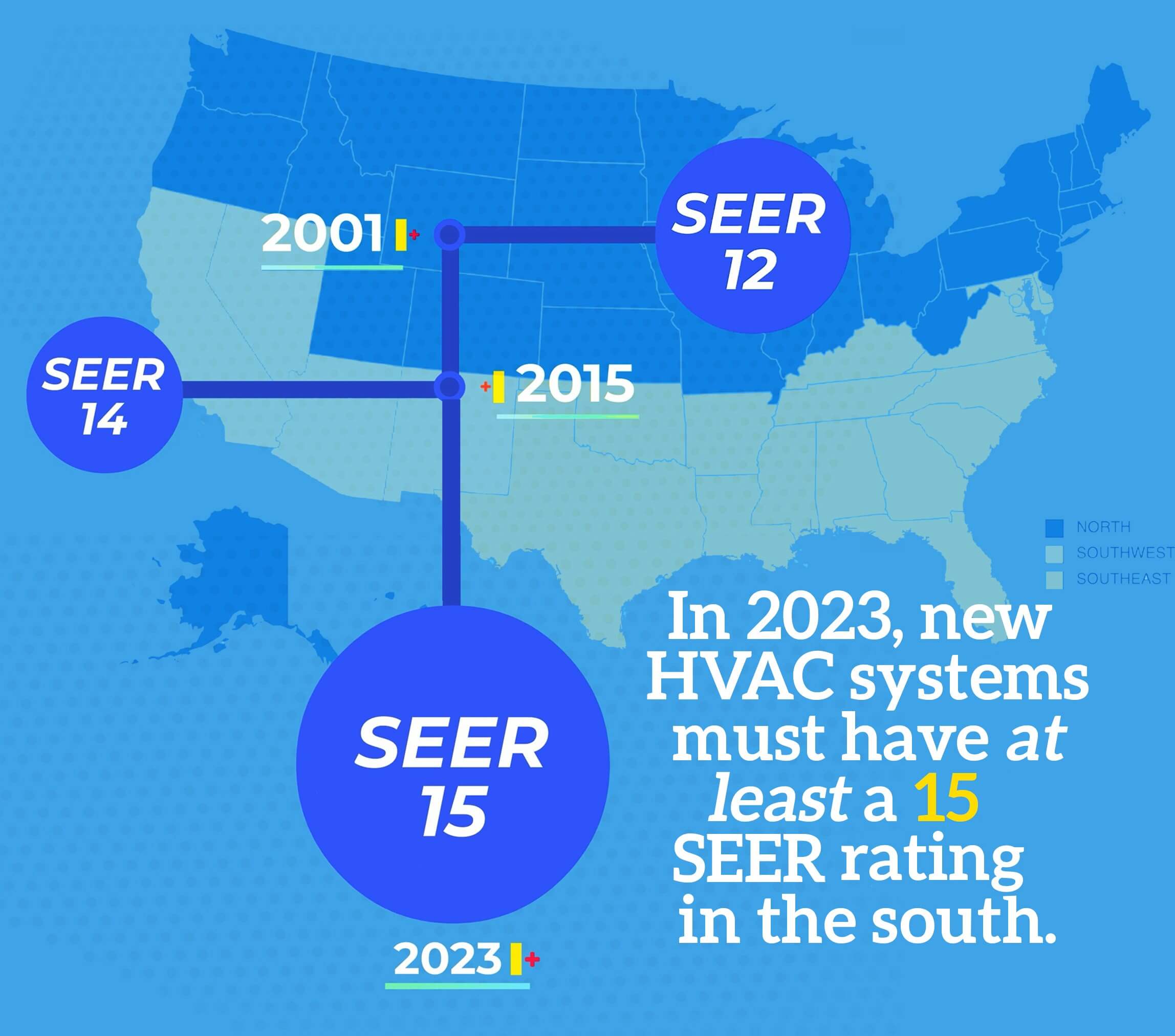
How Will SEER2 Make an Impact?
According to a study on Residential Energy Consumption in 2015 by the U.S. Energy Information Administration, over 76 million primary-occupied U.S. homes use air conditioning equipment.
When SEER2 goes into effect, the DOE calculates that these households will collectively save between $2.5 and $12.2 BILLION on energy bills during the 30-year period.
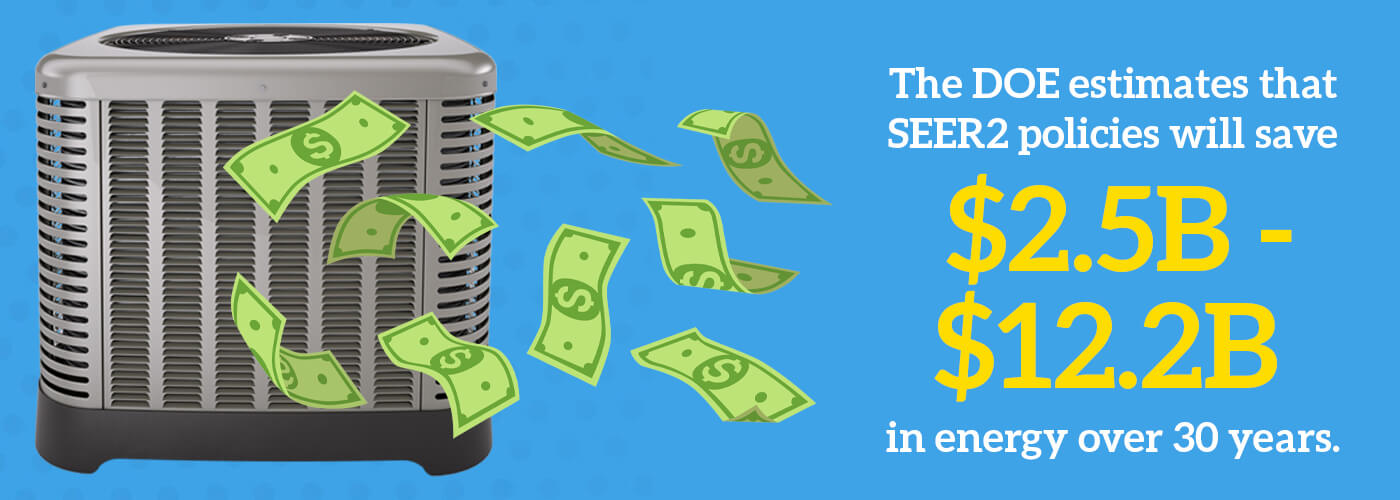
What Does This Mean for You?
In our regions, this means that after January 1, 2023, we will no longer be able to sell equipment that is not SEER2 compliant. The only HVAC equipment available in the southern part of the country will need to be more energy-efficient and have an average SEER2 rating of 15. Any equipment that does not meet these standards cannot be installed or sold in the states we service.
This also means that the average price of HVAC systems for your home will increase. The more efficient the system, the better it operates and the longer it lasts, so you would expect this equipment to cost a little more. Most units will see a price increase between 20 and 25%.
The BENEFIT of a more efficient system, however, is that your home will require less energy to keep it cool. This is great for the environment, and you can still keep your home as cool as you’d like.
And, these new systems can deliver the same cooling output more effectively, which means you’ll save money EACH MONTH on your utilities. Over time, these savings will help offset the higher price of the equipment. And, these units tend to last longer, which means you likely won’t need to replace this unit as early as you would have with a more basic model.
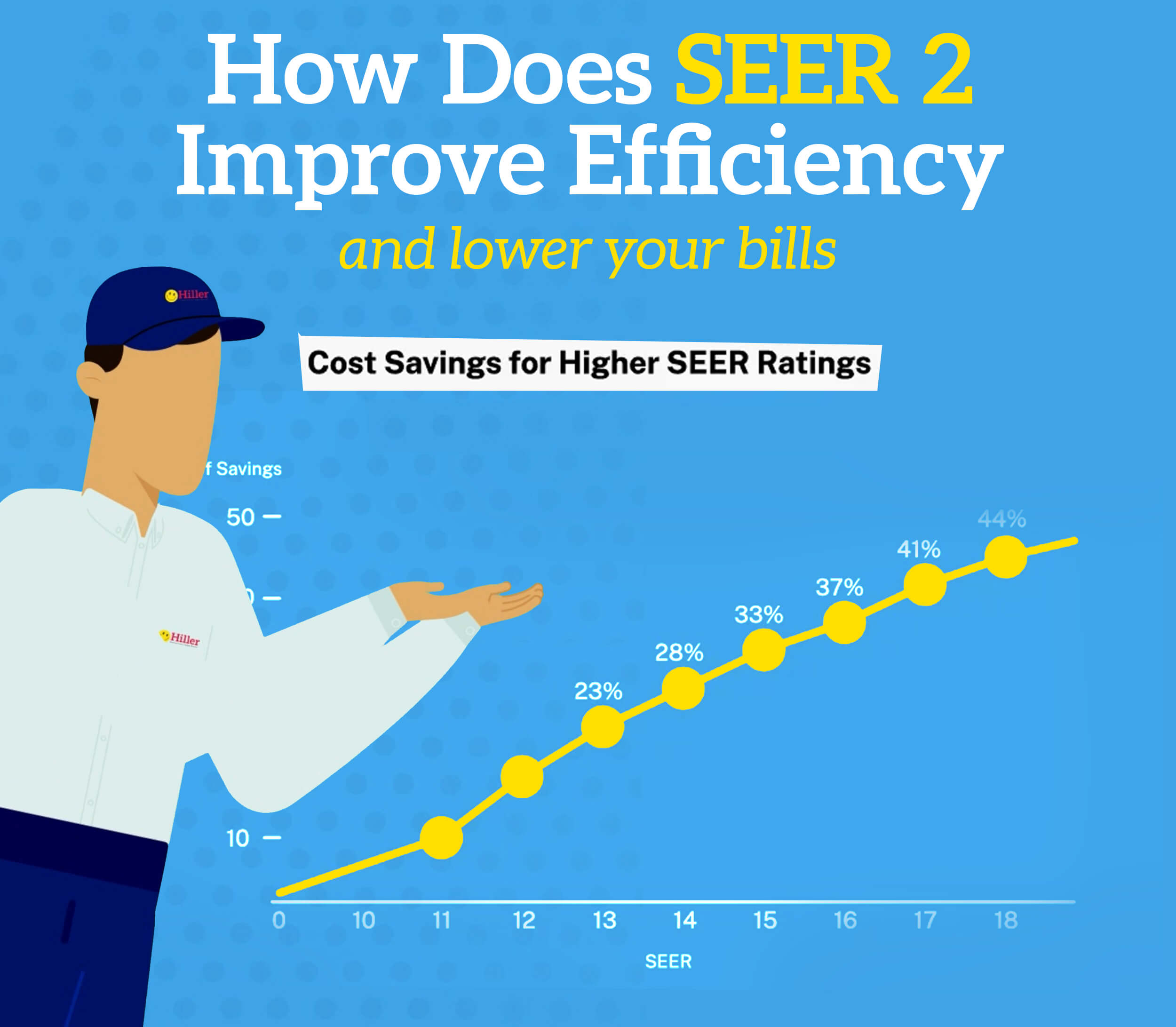
Think about your HVAC system like your car.
Just like a gas-efficient car costs you less to run, an energy-efficient air conditioner costs you less to operate. You can think of SEER as an HVAC unit’s “miles per gallon” rating, because units with a higher SEER rating operate more efficiently…or get more “miles to their gallon”.
While you might pay more for the car initially, you will pay much less money on gas every time you fill up in the future. When you purchase a new SEER2-compliant HVAC system, it’ll be like suddenly getting 35 miles to the gallon instead of 30 – which is a great thing in the long run.
How Do I Find My Equipment’s SEER Rating?
Most air conditioners carry a yellow “Energy Guide” label that clearly displays the SEER rating.

These Energy Guide stickers are mandated by the FTC, to help consumers compare energy usage and the cost of equipment. Here, you’ll find your SEER rating and notes about installation that may impact that number.
It can also be found near the top of the manufacturer’s label, near the model number and serial number. The first two numbers tell the story: any unit with a model number “15AC” for example, has a SEER rating of 15.
Do I Need to Upgrade My HVAC System to SEER2 Standards?
SEER2 requirements mean that older systems that do not meet 2023 requirements will be phased out. This means that parts and components will no longer be manufactured for these units, and repair work could be hard to find. It also means that these repairs and services may be more and more expensive over time.
If your unit is nearing the end of its lifespan, it may be time to plan ahead for a replacement now, to save you costly repair and service prices later.
What Should You Do to Prepare?
If you know your home is in need of an HVAC replacement, or if your HVAC system is getting old or having trouble keeping up with the demands for your home, you should start planning for a SEER2-compliant system now.
These higher-efficiency systems will see between a 20 and 25% increase in price. Therefore, it’s a good idea to begin budgeting and saving for these major home purchases before the time comes.
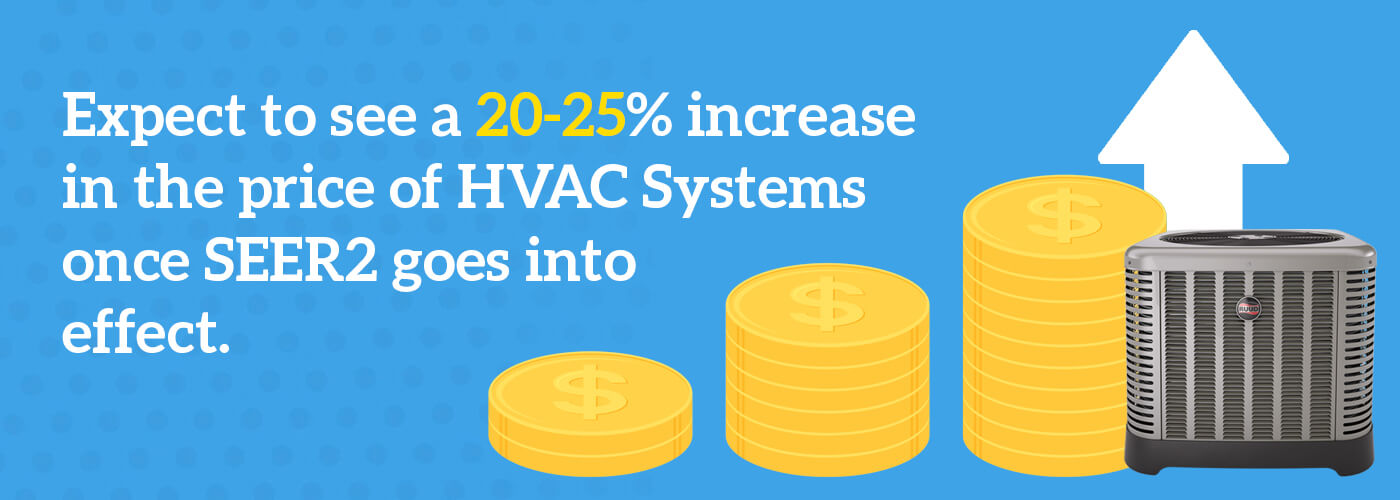
If you’re not sure how old your system is, or aren’t sure whether the system you have is SEER2 compliant, Hiller is here to help! If we’ve been out to your home to repair, service, or install equipment before, we likely have this information on hand. If not, we’d be happy to come take a look and make recommendations that best set you up for the future.
 Daily Promotion
Daily Promotion
FREE 10-Year Extended Warranty with Generac
Bonus protection for your backup power.
Get Promotion